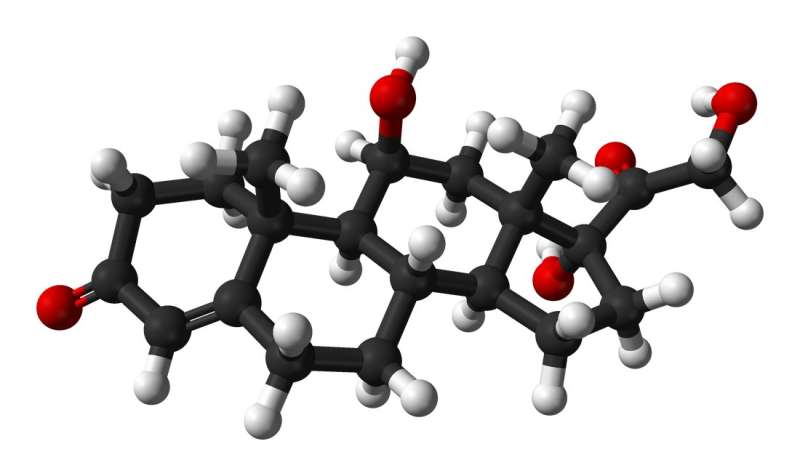Ball-and-stick model of the cortisol (hydrocortisone) molecule. Credit: Public Domain
A retrospective cohort study found that autonomous cortisol secretion was associated with 2- to 3-fold increased risk for death and cardiovascular disease in patients with adrenal incidentalomas. This information could help to inform decisions about which patients should be recommended for adrenalectomy. The findings are published in Annals of Internal Medicine.
Autonomous cortisol secretion in patients with adrenal tumors discovered incidentally on imaging, or incidentalomas, is associated with increased mortality, but how specific levels of cortisol secretion affect mortality risk is not known.
Researchers from Skane University Hospital, Sweden, studied consecutive patients who had adrenal incidentalomas identified between 2005 and 2015 at two hospitals in Sweden to measure the association between mortality and levels of autonomous cortisol secretion. Patients were grouped according to plasma cortisol levels of less than 50, 50 to 82, 83 to 137, or 138 nmol/L and higher. Data were collected from national registers for up to 14 years.
The researchers found that the risk for mortality increased linearly until cortisol levels reached 200 nmol/L. A cortisolDST of 83 to 137 nmol/L was associated with a 2-fold increase in mortality, and a cortisolDST of 138 nmol/L or higher was associated with a 3-fold increase in mortality. A cortisol level in the 50 to 82 nmol/L range was not associated with an increased death risk within 5 to 10 years. Based on these results, the authors recommend that clinicians treat known cardiovascular risk factors in these patients and incorporate findings in treatment decisions, including whether or not to perform surgery.
More information: Annals of Internal Medicine (2021). https://www.acpjournals.org/doi/10.7326/M20-7946
Journal information: Annals of Internal Medicine
Provided by American College of Physicians





















